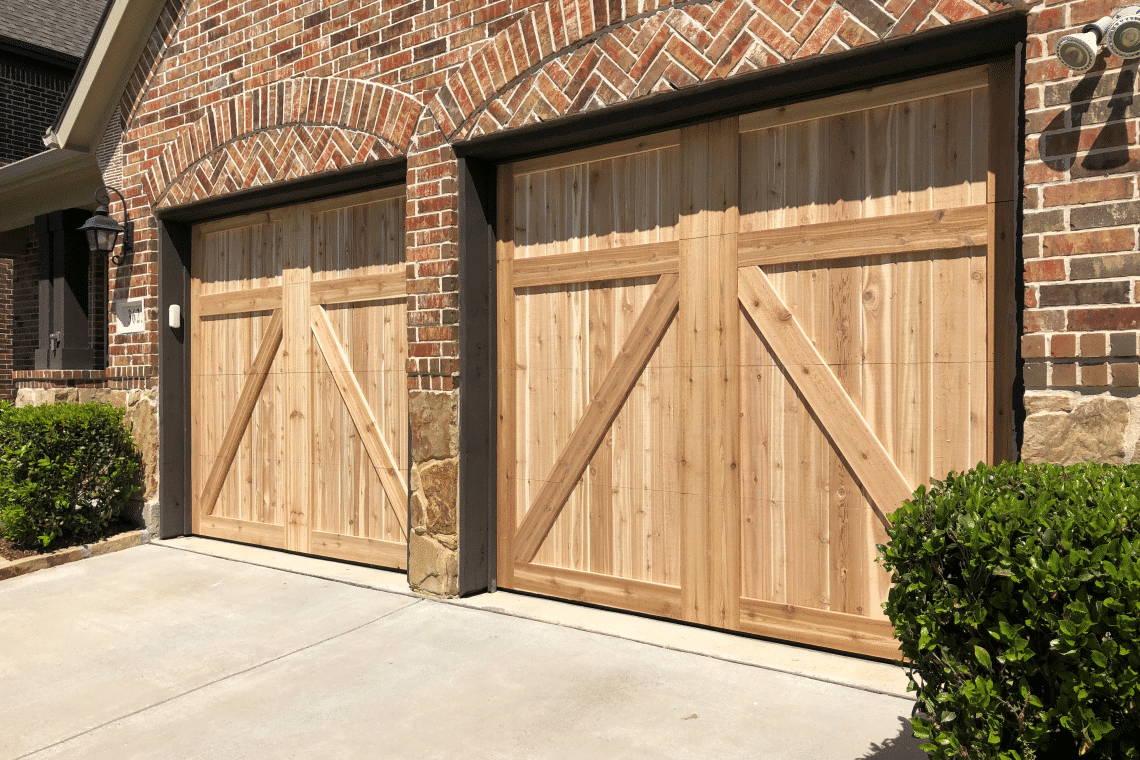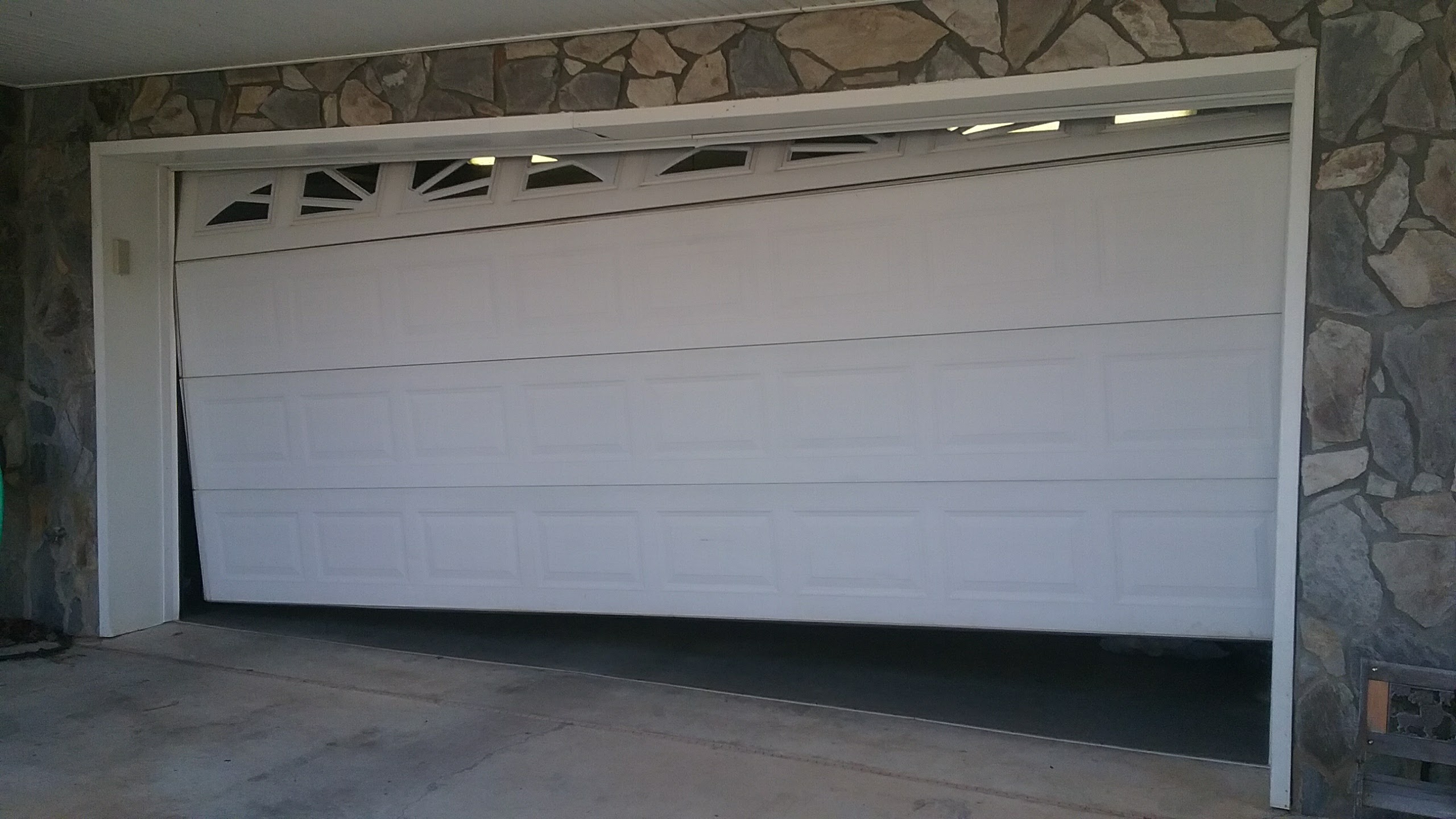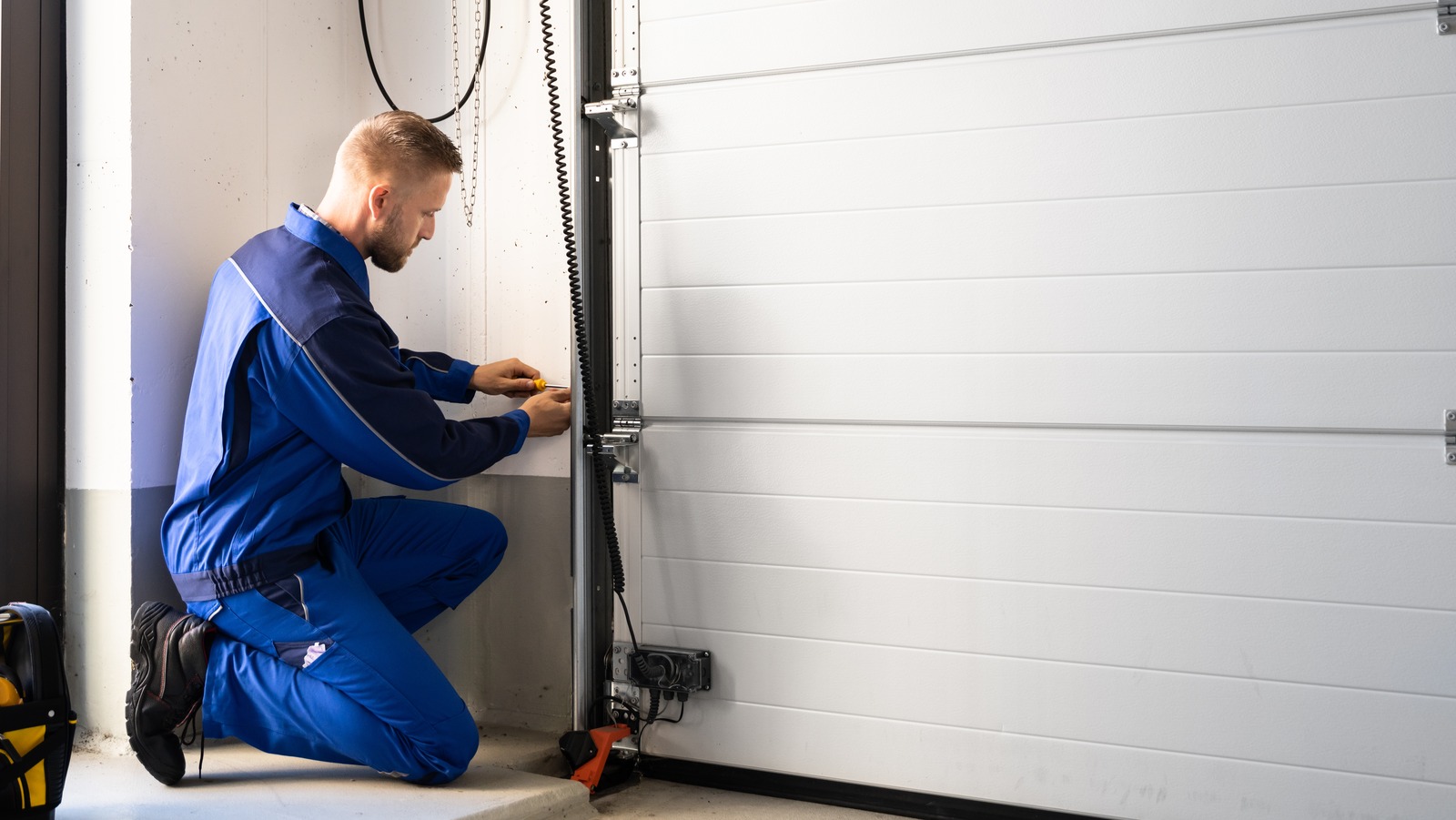Garage Door Spring Repair: High-Quality Spring Substitute and Repair
Garage Door Spring Repair: High-Quality Spring Substitute and Repair
Blog Article
Step-by-Step Instructions for Attending To Common Garage Door Services in your home
Browsing usual garage door fixings can be a workable job for homeowners with the appropriate strategy. As we discover each repair procedure, you'll uncover functional strategies that can improve the durability of your garage door, setting the phase for a more reliable home upkeep regimen.
Troubleshooting a Stuck Garage Door
Experiencing a stuck garage door can be discouraging, specifically when it interrupts your daily routine. Fixing this issue calls for a methodical technique to identify the underlying reason. Begin by evaluating the tracks for any kind of debris or blockages. Dust, leaves, or perhaps tiny things can impede the door's activity. If any type of foreign materials exist, clear them away carefully.
Following, check out the rollers and joints. Seek indicators of wear or damages, as these components are crucial for smooth operation. Oiling these parts with a silicone-based spray can improve functionality and reduce rubbing.
Additionally, check the positioning of the tracks. Misaligned tracks can cause the door to jam. If you discover a misalignment, carefully touch the tracks back into placement utilizing a rubber club.
Last but not least, make sure that the garage door opener is working appropriately. Listen for any kind of unusual noises or failure to respond. If the opener is malfunctioning, getting in touch with the manufacturer's directions or getting in touch with a specialist may be necessary. By following these repairing actions, you can properly resolve a stuck garage door and recover its capability.

Fixing Noisy Garage Door Openers
A noisy garage door opener can be a considerable annoyance, disrupting the tranquility of your home and indicating prospective mechanical concerns. Resolving this problem quickly can improve both the performance of the opener and the convenience of your living area.
First, recognize the source of the noise. Typical causes include loosened hardware, worn rollers, or absence of lubrication. Begin by evaluating the installing brackets and screws; tighten any loosened components to lessen rattling. Next, take a look at the rollers for wear or damages. If they appear cracked or used, consider changing them with nylon rollers, which often tend to run more quietly.
Lubrication is vital for a smooth procedure. Utilize a silicone-based lubricant on the relocating parts, including rollers, joints, and tracks. Avoid utilizing oil, as it can draw in dirt and debris, leading to further problems.

Repairing Broken Springs
Damaged garage door springtimes can jeopardize the whole system, rendering the door inoperable and presenting safety risks. These springs are critical for counteracting the weight of the garage door, making its operation smooth and effective. When a spring breaks, it can cause the door going down quickly or coming to be stuck, creating potential dangers for customers.
To fix damaged springtimes, initially, make certain safety and security by detaching the garage door opener and protecting the door in the shut placement. For torsion springtimes, see page meticulously relax the tension utilizing ideal tools, guaranteeing to use security goggles and gloves.
Make sure all elements are firmly fastened and reconsider the door's balance by manually raising it midway. Reconnect the garage door opener and carry out a test to make certain smooth operation.
Aligning Misaligned Tracks
Appropriate placement of garage door tracks is crucial for the effective and safe operation of the door. Misaligned tracks can create the door to bind, making it tough to open or close, and might result in more damage in time. To resolve this issue, first, make certain the door is completely shut to protect against any injury during the fixing process.
Begin by visually inspecting the tracks for any type of bends or distortions. Use a level to check if the tracks are vertically lined up. If they are not, gently tap the track with a rubber club to straighten it. Be mindful not anonymous to apply excessive force, as this can result in additional damage.
Following, check out the brackets that hold the tracks in position. If they are loose, tighten the screws with a socket wrench. For tracks that are significantly misaligned, it might be necessary to eliminate the track from its brackets, readjust its setting, and afterwards reattach it securely.

Replacing Damaged Garage Door Panels
When faced with harmed garage door panels, it's essential to address the issue promptly to maintain the door's performance and aesthetic allure. The primary step in changing damaged panels is to analyze the extent of the damages. If the damage is restricted to a couple of panels, replacement is typically much more affordable than official source replacing the entire door.
Begin by buying replacement panels that match your existing garage door. Ensure you acquire the proper dimension and design, as garage doors can be found in different layouts and products. To eliminate the damaged panels, separate the door from the opener and raise it into a fully employment opportunity. Make use of a socket wrench to remove the screws securing the panels.
After setup, reconnect the garage door opener and test the door to guarantee it runs efficiently. Routine upkeep and prompt fixings can prolong the life of your garage door, guaranteeing its ongoing functionality and aesthetic allure.
Conclusion
Dealing with problems such as stuck doors, loud openers, broken springtimes, misaligned tracks, and damaged panels makes certain ideal functionality and extends the life-span of the garage door system. Embracing these techniques not only enhances the comfort of making use of a garage door however also adds to total home safety and security and safety and security.
Report this page